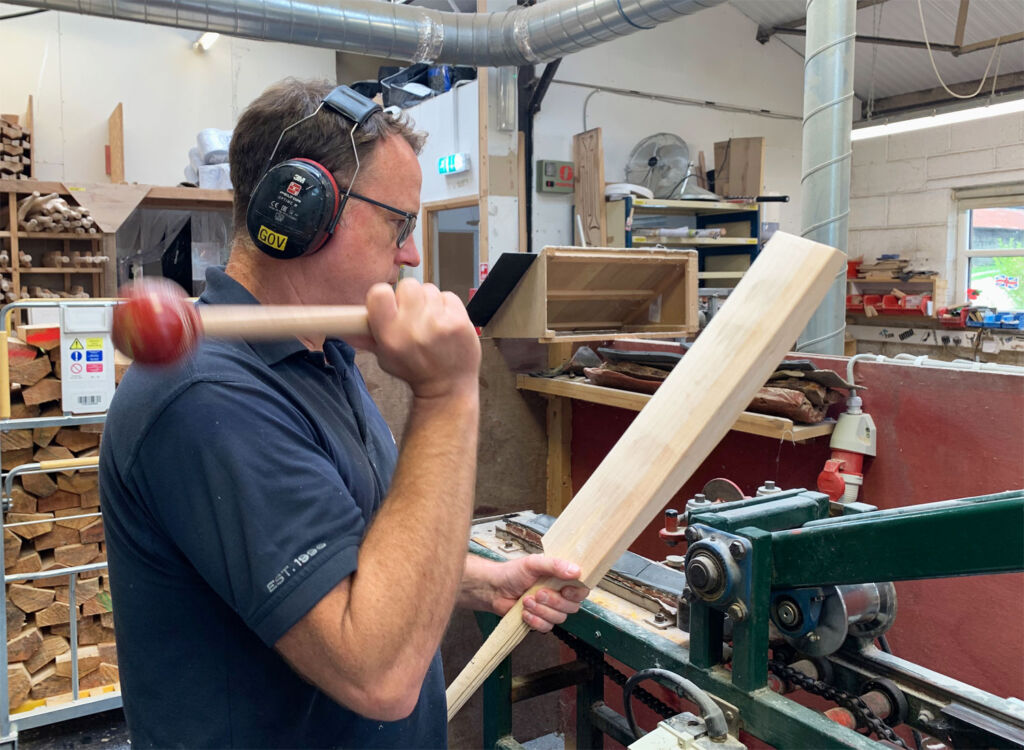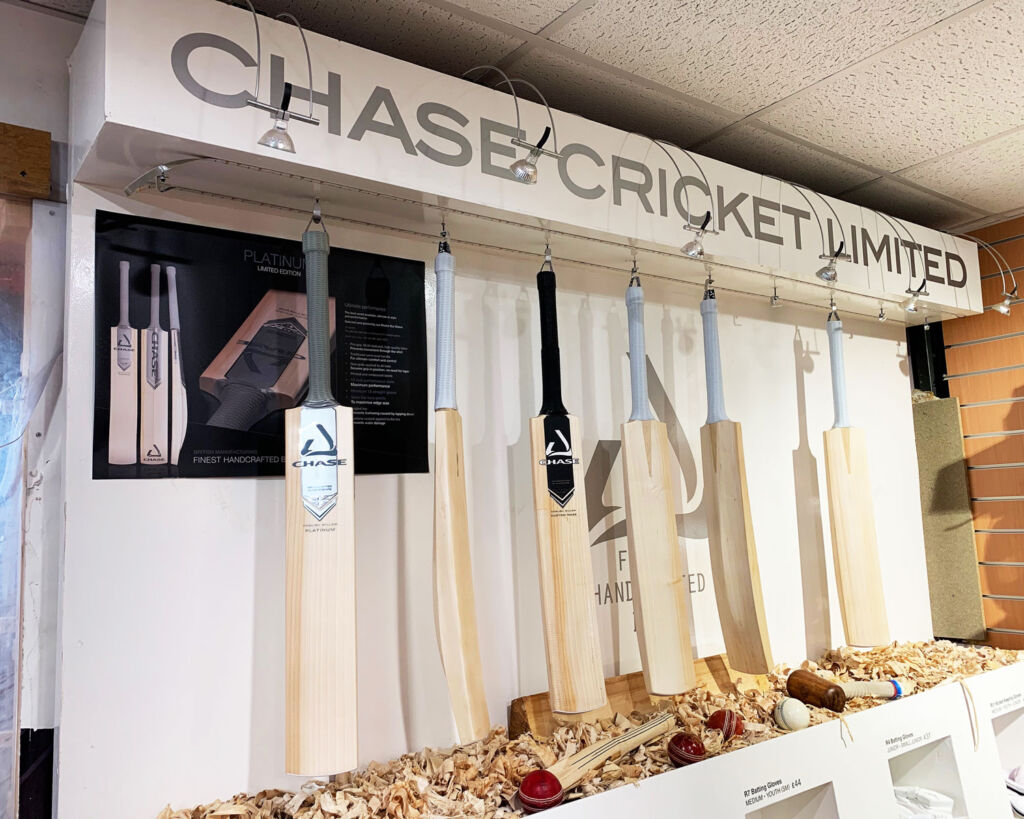

There are few things more English than the ‘thwack’ of a ball hit by a cricket bat. That iconic sound is governed by several factors which go into the production. On a visit to Handmade Bat company Chase Cricket, I was taken through the intricacies of making a quality willow bat.
In the heart of Hampshire near a sleepy village called Dummer, Chase Cricket owned by Dan and Julie Swaine, produce top-quality handmade cricket bats using sustainable English willow. The company has looked to the future and planted four acres of willow trees on their land, good for the environment and also forward-thinking as a supply of future wood could be interrupted during events like the COVID 19 Pandemic.
Chase currently use willow clefts supplied by Essex firm J.S. Wright & Sons Ltd, producers since 1894 instead of importing inferior wood from foreign countries.


Dan and Julie took over the company after buying it from England Cricketer Robin Smith who lived in Hampshire as he played for the County. As with all good stories they met in a pub. I caught up with Dan, and his small team at their workshop where he told me about the bat making process then got hands-on showing me.
Accept no substitute when it comes to buying a cricket bat. If you can visit the producer of the item you are spending your money on, then this is peace of mind. In a world of ordering online, there is no guarantee what you are buying is what you will get. Dan told me about the inferior quality of bats that are being sold online or from questionable sources, that are basically planks of wood.
The wood is machined to shape and has no preparation done to it. Stickers are then just applied and sold as either a branded name illegally, or as a so-called Handmade bat. I know first hand that buying a quality bat gives you years using it, as I still use one I purchased in 1988. Spending a bit more money will pay off, long term.
The bat making process
The Batmaker will take a pre-cut cleft currently brought in from a supplier then using a machine Dan made himself, cut the wood to a templated shape. The cleft is becoming a bat, and this piece has a v cut into the top, allowing for a handle to precisely slide in. Next, the bat is honed with extremely sharp draw blades, wood planes and fine sandpaper.
The skill shown by the Batmaker is a pleasure to see, and I reminisced with Dan about my Grandad who was a Master Carpenter, helping develop the glue for the Mosquito Fighter Bomber in WW2. Dan himself came from an Engineering background working on missiles for the MOD.
At the hand of the craftsman, the bat is hued and tailored to meet the requirements of the Batsman purchasing it. Weight, size and playing style preference are all taken into account so slithers of wood come off, here and there. The bat is then treated with linseed oil and knocked in using another machine the Chase team built themselves.
It replicates a cricket ball hitting the bat over several hours to build in an elasticity into the wood. Without this, the bat would be ‘dead’ and a ball hitting it during play would not fly off the bat. I have condensed the process as there are a lot of stages the wooden cleft experiences to get to the excellent handmade bat.
Summary
If you are looking for a cricket bat, then speak to the people who make them and do so lovingly. The artisan craftsmen at Chase, play cricket and know what players require from their bats. Handmade from sustainable English Willow Chase supply Professional Players through to Colts starting their journey into cricket.
The small team take care of their customers so well, as they want them to enjoy using their bat and come back again. Buy from Chase Cricket and enjoy your scoring with your beautiful bat.
Chase Cricket – Where and How?
Chase Cricket Limited
Calving Barn
Dummer Down Farm
Dummer
Hampshire
RG25 2AR
Great Britain
Tel: +44 (0)1256 397499
Email: info@chasecricket.co.uk
For more information on Chase Cricket and to view their current range of products, visit www.chasecricket.co.uk.
Read more sports-related articles in our dedicated section here.
